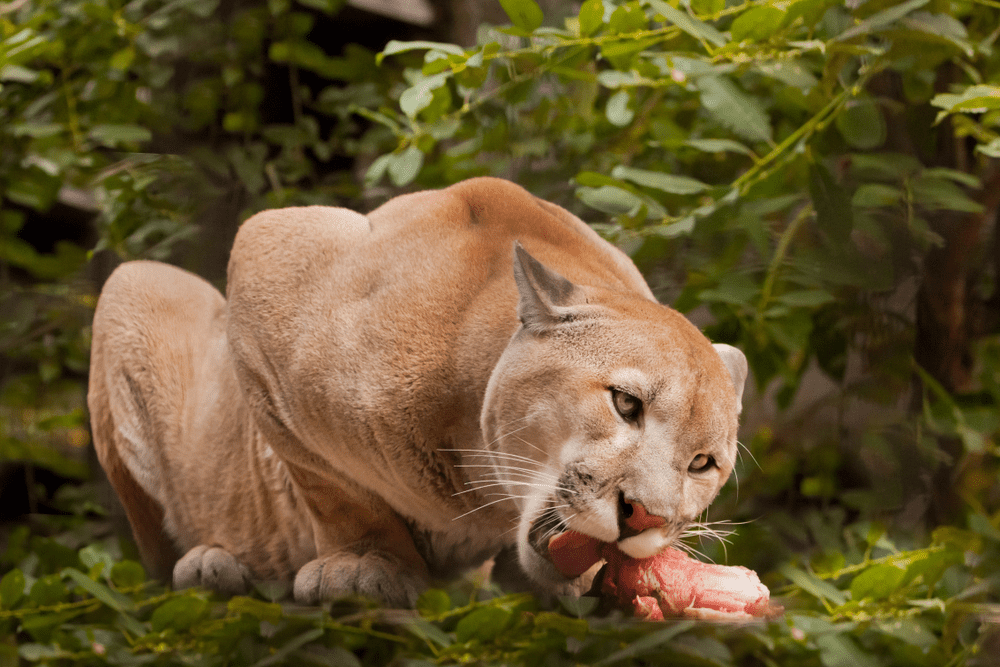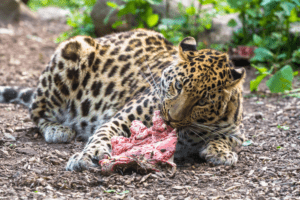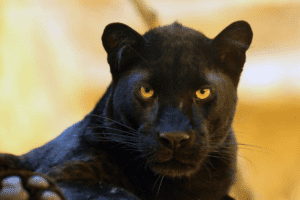Have you ever wondered that What does Puma eat and how do they Hunt? The Puma Cat (Puma concolor) is a fantastic and elegant huge cat and naturally one of the most skilled predators. Pumas are also called Catamounts, Mountain Lions, and Panthers.
Although it is undeniable that pumas are great predators, one would wonder, “What do pumas eat? How much do they consume? Does puma only eat meat? Does puma feed on crayons?
What are the threats facing pumas? How can we save pumas?
In this article, we’ll look into the solutions to those questions.
Table of Contents
What Does Puma Eat? Introduction to puma
Pumas (Puma concolor), commonly known as mountain lions, cougars, panthers, and catamounts, are members of the Felidae family and have a large distribution of any New World mammal, from Southeast Alaska to South Argentina and Chile.
Habitat
To comprehend the dietary habits of a puma cat, it is vital to first comprehend where the puma lives. Pumas can be found in a wide range of habitats, including, chaparral, desert scrub, woods, swamps, flatlands, and other habitats with a little vegetative cover or rocky mountain topographic, however, they avoid Agricultural areas.
To gather meat, the animal prefers to carve out its ecological niche and establish dominance inside its territory.
How do Puma Hunts?
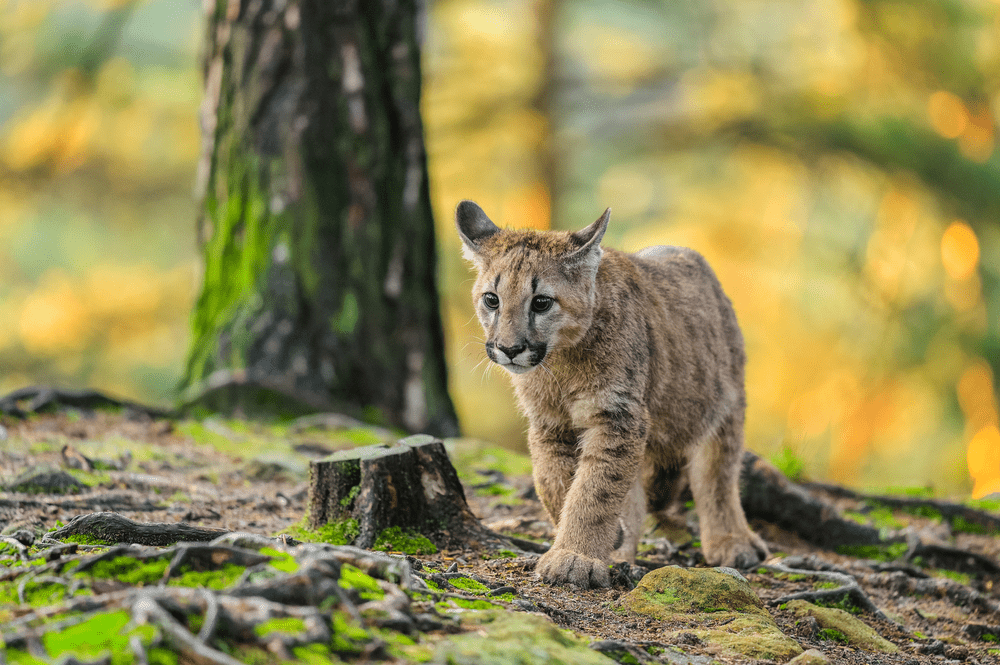
Puma prefers deer to smaller animals like porcupines, raccoons, and coyotes but they also consume larger ungulates. These cats hunt their victims with a mix of stealth and strength, following them until an opportunity to pounce presents itself, and then biting the back of the neck to death. For several days, large carcasses will be hidden and fed on.
What do puma eats?
The Puma is a huge and powerful carnivore that survives by hunting and devouring only other animals. Small creatures such as Mice, Rats, Birds, Fish, and Rabbits make up the majority of the Puma’s food, which is abundant on the lush mountain slopes and in the lowland forests.
The Puma’s massive size allows it to hunt larger creatures such as sheep, raccoons, goats, and livestock, which it catches by pouncing onto the animal and securing it. The Puma is not only large, but it also has an agile and powerful frame that allows it to easily outrun many of the animals it hunts.
Seasonal variation in pumas’ diet
While talking about puma’s diet it is an obvious question that does season and competitors impact on feeding behavior of puma. Allen et al., (2014) studied the effects of predators on the factors that fluctuate over seasons, such as differences in the number and vulnerability of the prey. Previous research has produced mixed results when it comes to whether puma feeding ecology differs by season.
They studied puma eating ecology with migrating black-tailed deer using GPS collars in a Uni-prey system. They concluded that kleptoparasitism in black bears (Ursus americanus) and the decomposition of kills caused reduced consuming time for pumas during the summer.
Pumas killed black-tailed deer at higher elevations during the summer than in the spring, autumn or winter, and the ratio of prey in elevations was significantly correlated with the season, implying that pumas engaged in seasonal foraging and tracked prey availability in a system with migrating prey.
Does puma influences other species
Large carnivores have a crucial role in defining the mix and organization of biological groups in many habitats. As a result, Allen (2014) performed a study to discover how the effects of pumas (Puma concolor) on other species, such as prey and competition, differ across their range and within individuals.
He looked into the effects of pumas and black bears on the scavenging population. He discovered that pumas and black bears were a source of scavenging species limitation, both in terms of the scavenger community’s species richness and sum feeding times, as well as the occurrence, total feeding times, and mean eating bout durations of scavenger species.
Pumas, on the other hand, had some positive effects, such as facilitating the acquisition of carrion by scavengers and triggering a cascade pattern that increased the acquisition of carrion by small carnivores. Black bears, on the other hand, as dominant scavengers, monopolized carrion supplies and severely limited the acquisition of carrion by other scavengers, with scavenger constraints that were even worse than those imposed by pumas as top-level predators.
The impacts of large predators on carrion acquisition show that they have a significant impact on the scavenger population, and their influence could be a mechanism for the effects of large carnivores on community composition.
Interesting facts about puma cat
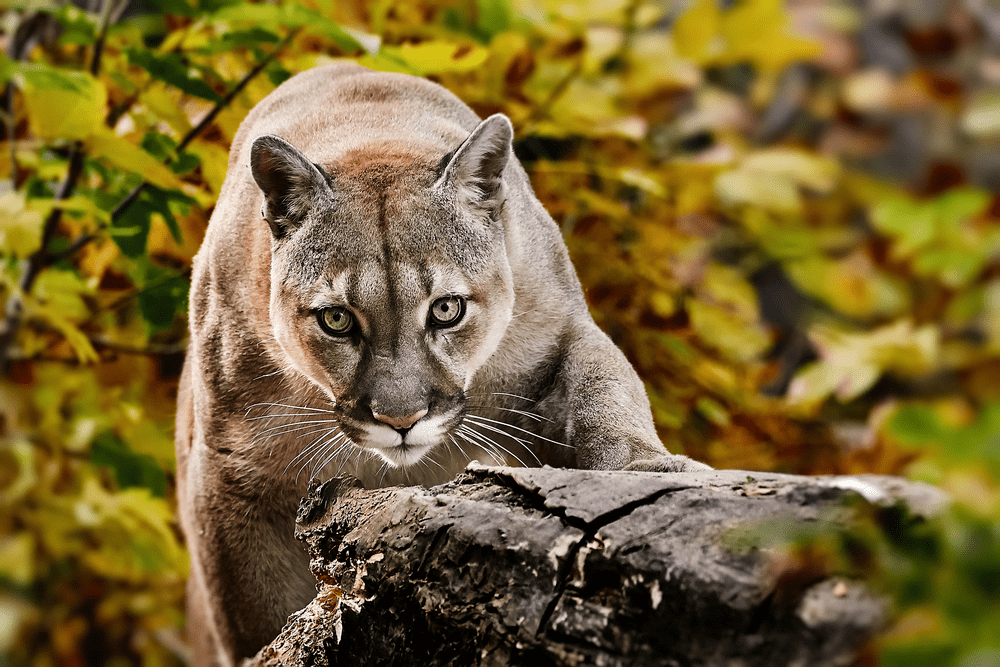
- The puma has seven subspecies, all of which have similar traits but varied in color and size due to their vast distribution.
- The puma is seen to be the ultimate survivor of family felines on the American continents because they have adapted to a variety of environments.
- The Puma, unlike many other cat species, has no markings on its fur, earning it the scientific name Felis concolor, which translates to “cat of one color.”
- After the lion, leopard, jaguar, and tiger, the Puma Cat is the fourth heaviest of the New World cats.
- Even though pumas are giant cats, they are not classified as “big cats.” Rather, they are one of the largest cats in the ‘small cat’ category, although some can grow to be as huge as a leopard.
- They can’t run fast enough to catch their prey. They can, however, leap up to 20 feet in length.
General behavior and niche
Except for the time cubs spend with their mother, the puma is a solitary species. Pumas traverse extensive ranges in search of food. Their niche can range from 80 square miles in the summer to 40 square miles in the winter when falling snow makes access to several mountain locations difficult.
Pumas travel from the mountain woods to the valleys to avoid the worst of the winter in some areas. Pumas can not only adapt to a variety of environments, but they can also hunt well at any time of day or night. The Puma’s robust and muscular rear legs, as well as their huge paws, allow them to maneuver over the rocks more rapidly and with better agility.
Pumas are identified to emit a range of sounds, especially when threatening another Puma away from their area and when the mating season approaches. Puma is Crepuscular in behavior and its life span is 10 to 15 years
Does puma use to roar?
Pumas are unable to roar, which is one of the most evident reasons why this massive and muscular feline is not considered one of the world’s ‘Big Cats’. No other feline species can accomplish this; hence it is unique to the ‘big Cat’ family.
Breeding behavior
The breeding season lasts from December to March, with litters of up to 6 cubs born between February and September after a three-month gestation period. The male and female separate after mating and he continues to mate with other females for the rest of the season.
Puma cubs, like many other felines, are born blind and helpless for the first two weeks of their lives, until their blue eyes open fully.
Conservation status
Despite being forced into smaller areas of its large historical range, the IUCN has classified the Puma as a species that is unlikely to go extinct in its natural habitat in the near future. This is due to the fact that pumas are not only extremely adaptive animals, but they are also rather numerous in more distant mountainous areas.
Indeed, many people believe that the Pumas’ capacity to adapt to a variety of habitats is one of the reasons why the population has remained so large.
Why pumas are under serious threat
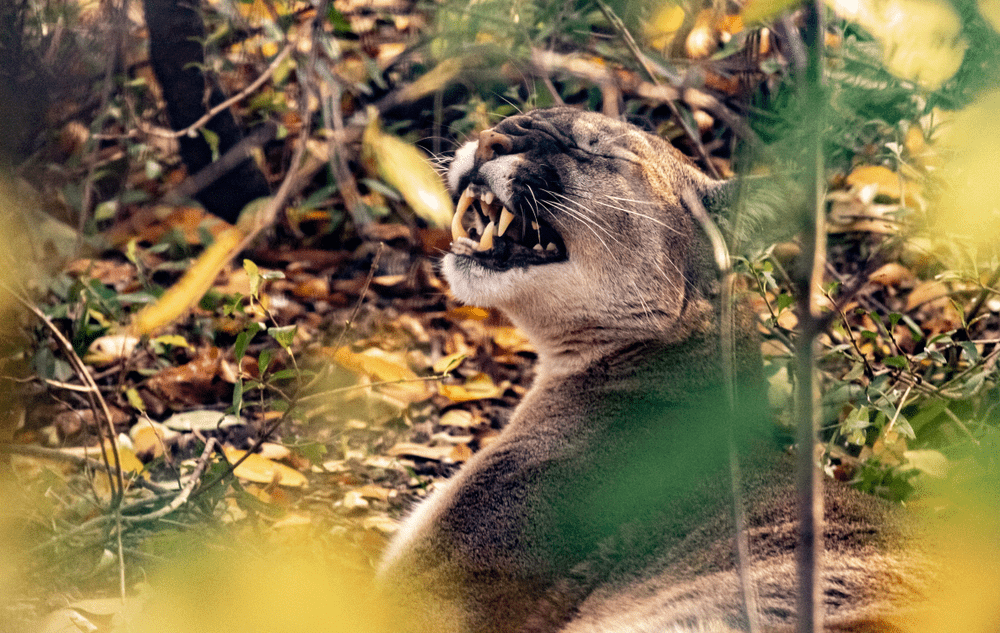
Because the puma is one of the most dominant predators in much of its native habitat, it is rarely preyed upon by other animals. Pumas that are susceptible due to illness or injury have been reported to be preyed upon by other large predators such as Bears and Wolves, as well as other Pumas.
Humans are the greatest threat to the Puma, who have not only hunted this endangered Cat for obtaining its fur but have also caused dramatic habitat loss throughout much of its native range, primarily owing to expanding human settlements and agricultural expansion and deforestation. Ranch owners in some locations hunt them because they blame Pumas for their cattle losses.
The Florida Panther, which is the smallest and rarest of the Puma species, is one of the most well-known subspecies. This rare mammal has a crimson tinge to its fur on its back, as well as a dark blotch in the center, and is said to be on the verge of extinction.
Does puma attack humans?
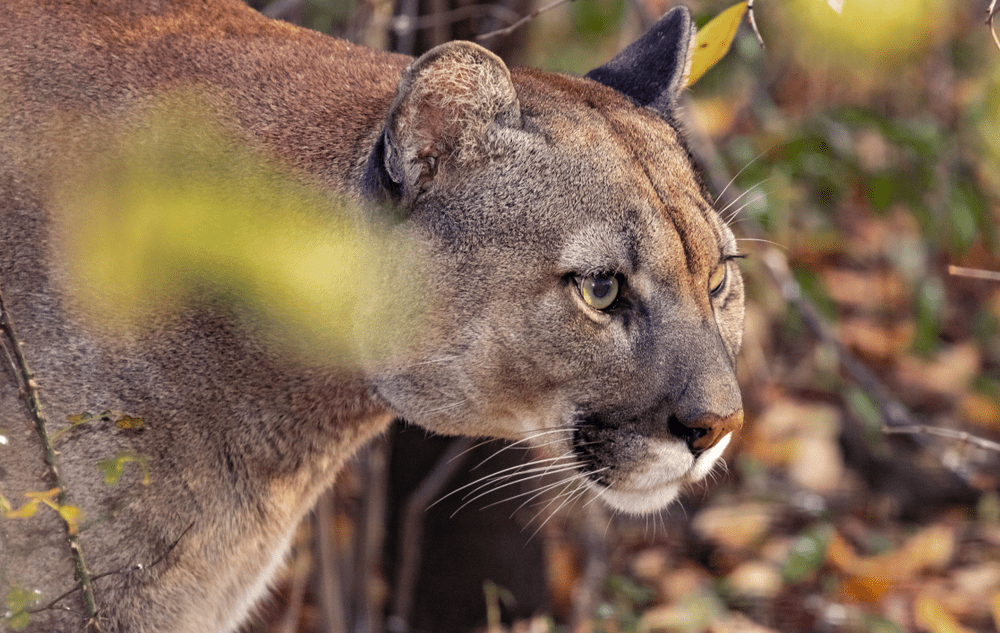
Although, The Puma is a deadly predator, and while assaults on humans are uncommon, they do happen. Nearly 120 assaults on humans have been reported, however, the majority of these occur when the Puma is cornered or feels threatened in some way.
Pumas have attacked humans in rare circumstances of severe famine, although this is not typical because people are not generally considered prey by them. Puma populations have been dropping in both North and South America over the last century, owing primarily to habitat degradation and the shooting of Pumas by farmers who worry for their livestock.
Read Also: What do lynx eat? Feeding Preferences And Diet Explained
Conservation strategies
According to the IUCN, the puma cat population is in critical decline. Based on my evaluation, I have the following recommendations and actions that must be performed as soon as possible to ensure the survival of puma cats.
- Raising native awareness campaigns as well as wildlife education at the grass-roots level.
- Adopting Research-based planning for conservation
- Making protected areas for In situ conservation
- Providing veterinary facilities
- National and global level policies for integrated land use management and minimizing the habitat lose
- Special convention and protocol at the global level for conservation of Puma cats
References
https://cdnsciencepub.com/doi/abs/10.1139/cjz-2013-0284
http://researcharchive.vuw.ac.nz/handle/10063/3470
https://digital.csic.es/handle/10261/212196
https://www.iucnredlist.org/species/pdf/97216466
https://www.jstor.org/stable/10.1086/681004

